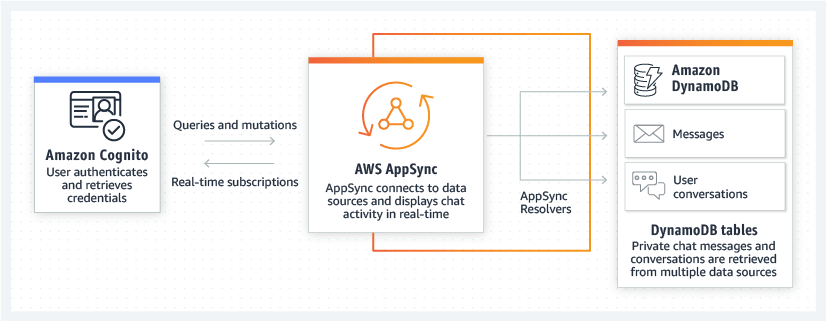Fast and flexible NoSQL database service for any scale
Amazon DynamoDB is a value-driven, turnkey database that delivers single-digit millisecond performance at any scale. It is a fully managed, multi-region, multi-active, and durable database with built-in security, backup and recovery, and in-memory storage for Internet-scale applications. Amazon DynamoDB can handle more than 10 trillion requests per day and can support more than 20 million requests per second.
Many of the world’s fastest-growing businesses, such as Lyft, Airbnb, and Redfin, as well as companies like Samsung, Toyota, and Capital One, depend on Amazon DynamoDB for scale and performance to support their mission-critical workloads.
Hundreds of thousands of customers have chosen AWS DynamoDB as their key value and document database for mobile, web, gaming, ad tech, IoT, and other applications that require low-latency access to information at any scale. Create a new table for your application and let Amazon DynamoDB handle the rest.
benefits
Enterprise Ready
DynamoDB supports ACID transactions to enable you to build business-critical applications at scale. DynamoDB encrypts all data by default and provides granular identity and access control across all your tables. You can instantly create full backups of hundreds of terabytes of data without impacting performance on your tables, and restore them 35 days in advance, non-stop, at any point in time. You can also export your DynamoDB table data to your data lake on Amazon S3 to perform analytics at any scale. DynamoDB is also backed by a service level agreement to guarantee availability.
There are no servers to manage
Amazon DynamoDB is serverless, with no servers to provision, patch, or manage, and no software to install, maintain, or operate. Amazon DynamoDB automatically scales tables up and down to adjust capacity and maintain performance. Availability and fault tolerance are built in, eliminating the need for you to design your applications for these capabilities. Amazon DynamoDB provides both predicted and on-demand capacity modes so you can optimize costs by specifying capacity per workload or paying only for the resources you consume.
Performance at Scale
DynamoDB supports some of the world’s largest scale applications by delivering consistent, single-digit millisecond response times at any scale. You can build applications with virtually unlimited throughput and storage. DynamoDB global tables replicate your data across multiple AWS regions to give you fast, local access to your globally distributed application data. For cases that require faster access, even with microsecond latency, DynamoDB Accelerator (DAX) provides fully managed in-memory caching.
Applications
Microservices
Create flexible, reusable microservices using DynamoDB as a serverless data store for consistent, fast performance.

Mobile Backends
Use DynamoDB and AWS AppSync to build interactive mobile and web applications with real-time updates, offline data access, and data synchronization with built-in conflict resolution.

Serverless Web Applications
Build powerful web applications that scale up and down automatically. There’s no need to maintain servers, and your applications are automatically available.

use items
Gaming
Companies in the gaming vertical use DynamoDB across all capabilities of gaming platforms, including game mode, player data, session history, and leaderboards. The key benefits these companies get from DynamoDB are its ability to reliably scale to millions of concurrent users and requests while ensuring consistently low latency in the single-digit milliseconds. Additionally, as a fully managed service, DynamoDB has no operational overhead, so game developers can focus on developing their games instead of managing databases. Also, as game developers increasingly look to expand from a single AWS region to multiple AWS regions, they can rely on DynamoDB global tables to replicate multi-region, live data.
Technical announcement
Ad tech companies use DynamoDB as a key-value store to store a variety of marketing data, such as user profiles, user events, clicks, and visited links. Possible use cases include real-time bidding (RTB), ad targeting, and attribution. These use cases require high request rates (millions of requests per second), low, predictable latency, and reliability. When read volumes are high or sub-millisecond read latency is required, companies leverage caching via DynamoDB Accelerator (DAX). Increasingly, ad tech companies must deploy their RTB and targeted advertising platforms across more than one AWS geographic region, which requires data replication between regions.
![]()
The Pokémon Company moved global configuration and time-to-live (TTL) data to Amazon DynamoDB, resulting in a 90% reduction in bot login attempts.
Common Uses:
- Game Modes
- Player Data Storage
- Player Session History Storage
- Leaders
Common Use Cases:
- User profile stored in RTB and ad targeting
- User events, clickstreams, and stored data
- Stores metadata for assets
- Popular item cache
Banking and finance
As banking and financial services companies build more applications, they are looking to leverage fully managed services to increase agility, reduce time to market, and minimize operational overhead. At the same time, they need to ensure the security, reliability, and high availability of their applications. As these companies extend their existing services supported by legacy core systems, they are finding that legacy systems cannot meet the scalability demands of a growing user base, new platforms such as mobile apps, and the resulting increase in traffic. To solve this problem, they are replicating data from their mainframes to the cloud to offload traffic.
Retail
Many companies in the retail space are using common DynamoDB design patterns to consistently deliver low latency for mission-critical use cases. Being free from scaling and operational overhead concerns is a key competitive advantage, enabling high-velocity, ultra-scale events like Amazon Prime Day, the size of which is difficult to predict. Scaling up and down allows these customers to pay only for the capacity they need, keeping valuable technical resources focused on innovation, not operations.
Typical Use Cases:
- User Transactions
- Event-Based Transaction Processing
- Fraud Detection
- Mainframe Upload and Change Record Information
Common Use Cases:
- Shopping Carts
- Workflow Engines
- Inventory Tracking and Fulfillment
- Customer Profiles and Accounts
Software and the Internet
A key aspect among software companies and many other DynamoDB customers is Internet scale. These companies’ use cases require the ability to accommodate concurrency, request rates, and traffic spikes. This concurrency scales to millions of users and connections, and request rates can easily reach millions of seconds. DynamoDB has a proven track record of being able to support Internet scale use cases and their needs while maintaining consistent single-digit millisecond latency. Using global tables, DynamoDB customers can easily extend their applications across multiple AWS regions for global scale and business continuity.
Media & Entertainment
Media and entertainment companies use DynamoDB when they need extreme scale of throughput and concurrency, low latency, and reliability. DynamoDB elastically scales with load and maintains low latency, which is critical for real-time scenarios, such as video streaming and interactive content. In such scenarios, the number of concurrent users can reach millions, and no database handles this type of concurrency like DynamoDB. Despite such high concurrency, latency is low, giving individual users an optimal user experience, whether retrieving their media, or participating in an interactive, real-time event. These companies use DynamoDB to address their scalability challenges and maintain their focus on feature development, not database management.
Dropbox migrates to AWS and saves millions in storage costs.
Common Use Cases:
- User Content Metadata Stored
- Chart Data Relationship Stored
- Metadata Caching
- Store Tracking Tracking
- Storing user, vehicle and driver information
- Storing user vocabulary information

A+E Networks migrated to AWS and their Access app runs for less than a latte a day on a serverless architecture using DynamoDB.
Typical use cases:
- Media metadata stores
- User data storage
- Digital rights management stores
Customers
NIKE
Nike Digital migrates its large Cassandra clusters to fully managed Amazon DynamoDB, providing more resources for a better customer experience.

The U.S. Census Bureau is scaling response collection to mobile or desktop, allowing people to participate in its decennial census online for the first time using DynamoDB.

The Pokémon Company moved global configuration and Time to Live (TTL) data to Amazon DynamoDB, reducing bot login attempts by 90 percent It was.

Samsung Electronics uses Amazon DynamoDB to back up its petabyte-sized mobile application, resulting in excellent performance and cost savings.

A+E Networks has migrated to AWS and running their cloud-native Access app for a day on a serverless architecture using DynamoDB is less than a latte.

Netflix uses DynamoDB to run A/B tests that create personalized streaming experiences for their 125+ million customers slow.

Capital One uses DynamoDB to reduce latency in its mobile apps by moving its core transactions to a serverless architecture for unlimited scale.

FanFight moved its fantasy sports app to DynamoDB, allowing it to reduce costs by 50%, scale up to 1 million times per second, and increase daily revenue by 4x give.









